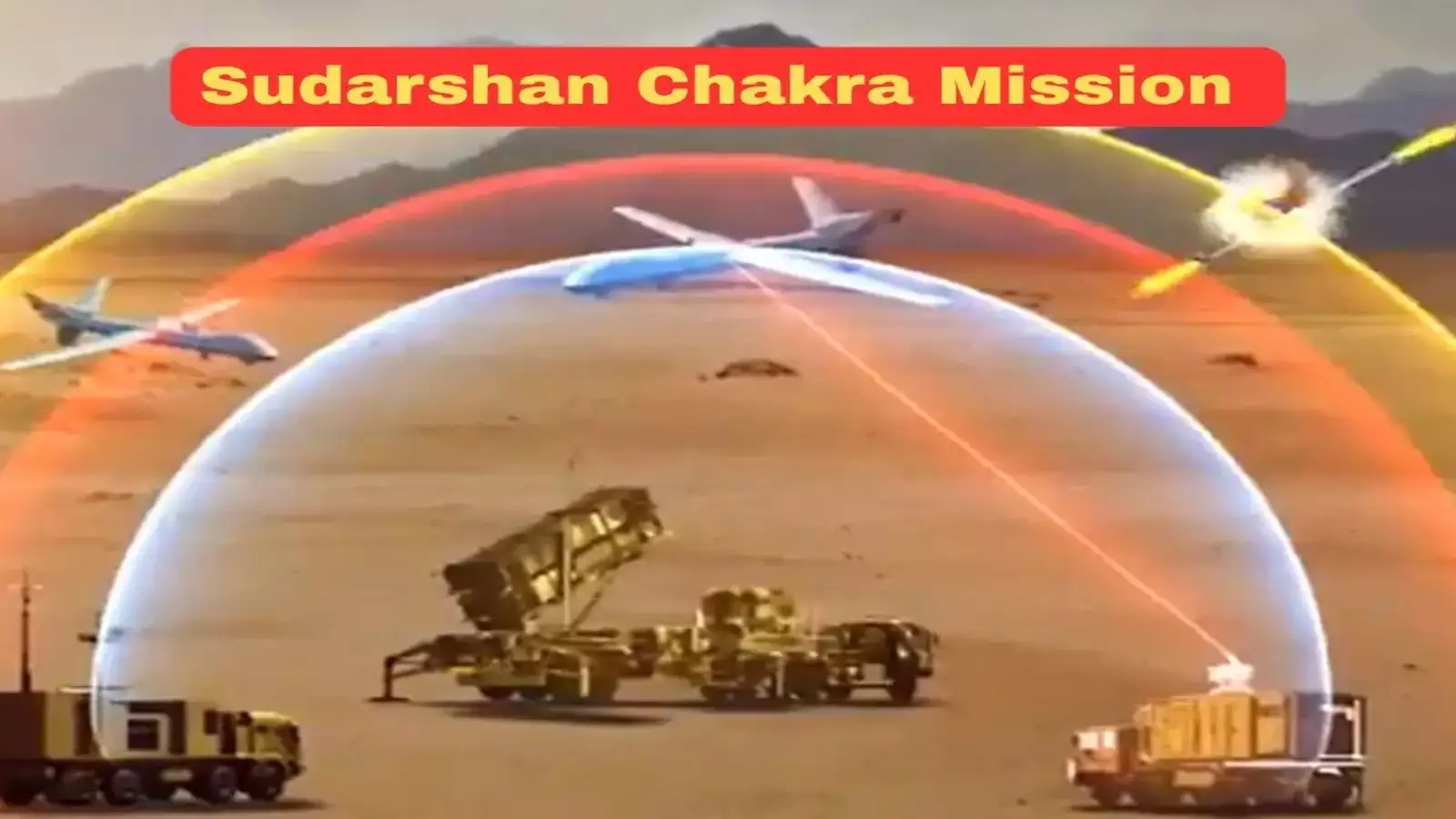
Mission Sudarshan Chakra
Mission Sudarshan Chakra
On the 79th Independence Day, the Prime Minister of India formally unveiled Mission Sudarshan Chakra, signaling a transformative step in India’s defense and strategic capabilities. Designed to address both contemporary and emerging security threats, the mission seeks to establish a multi-layered defense shield across the country. Far beyond a mere protective barrier, it embodies offensive readiness, showcasing India’s ability to respond decisively to any act of aggression. In an era of evolving global threats and rapid technological advancements, the mission reflects India’s vision of strategic self-reliance, strengthening national security across land, air, and maritime domains.
Understanding Project Sudarshan Chakra
At the core of the mission lies Project Sudarshan Chakra, the operational foundation of the program. Central to this project is the SMART system—Supersonic Missile Assisted Release of Torpedo, an innovative naval weapon integrating the speed of a supersonic missile with the destructive precision of a torpedo.
Traditionally, torpedoes launched from submarines faced limitations in range, constraining anti-submarine operations. SMART overcomes this challenge, boasting a range exceeding 600 kilometers and supersonic speed that drastically reduces enemy reaction time. Its targeting precision ensures that enemy submarines are neutralized effectively even in contested waters. Developed entirely by the Defence Research and Development Organisation (DRDO), SMART emphasizes India’s commitment to indigenous defense innovation. Its successful trials off the Odisha coast demonstrate operational readiness, reinforcing India’s maritime defense and expanding the Navy’s capacity to monitor and secure critical sea lanes.
Mission Sudarshan Chakra: A Holistic National Defense
While Project Sudarshan Chakra strengthens India’s anti-submarine warfare, the broader Mission Sudarshan Chakra envisions a nationwide defense network. The mission is designed to intercept a wide spectrum of aerial threats, including missiles, drones, and fighter aircraft. It moves beyond a passive shield, incorporating offensive capabilities to deter adversaries and provide rapid, precise retaliation if required.
The mission adopts a multi-layered defense architecture, capable of intercepting descending missiles, neutralizing low-flying drones, and countering approaching aircraft. This ensures continuous protection across altitudes and threat types, minimizing vulnerabilities while reinforcing India’s strategic deterrence.
Technological Prowess and Indigenous Development
A cornerstone of Mission Sudarshan Chakra is indigenous innovation. All technologies deployed are developed domestically, reducing reliance on foreign imports and strengthening India’s defense industrial base.
The system integrates advanced Artificial Intelligence (AI) for threat identification and tracking. Its radar networks can monitor and track over 100 simultaneous targets, ensuring rapid threat assessment. For smaller, persistent threats like drones, high-energy laser systems can neutralize targets within seconds. Future upgrades include hypersonic missile defense capabilities and quantum radar technology, preparing India to counter next-generation warfare challenges. This blend of AI, precision targeting, and futuristic technologies ensures that the mission remains ahead of potential adversaries in both capability and scope.
Strategic Deployment and Operational Vision
Mission Sudarshan Chakra is designed for flexible deployment across India’s diverse geography. From mountainous regions and deserts to coastal areas and urban centers, the system can be positioned wherever strategic threats exist. This ensures that critical installations, major cities, and vulnerable regions are consistently protected.
Internationally, the mission is benchmarked against systems such as Israel’s Iron Dome and Russia’s S-400, highlighting India’s ambition to develop defense solutions of comparable global standards. By 2035, the mission aims to extend protection to nearly all major urban centers and strategic assets within potential enemy reach. The integration of the Navy, Air Force, and Army under a unified command enhances operational synergy, allowing seamless coordination and rapid response to multi-domain threats. Tri-service integration ensures maximum efficiency, turning India’s defense network into a cohesive, resilient shield.
Geopolitical Imperatives and Strategic Context
The necessity of a system like Mission Sudarshan Chakra is driven by the current geopolitical environment. The Indian Ocean region, critical for trade and energy security, is witnessing accelerated militarization. Several nations are enhancing naval and aerial capabilities, creating potential security challenges for India.
In this context, Project Sudarshan Chakra equips the Indian Navy with advanced anti-submarine capabilities, while the broader mission protects the nation from airborne threats, including drones, missiles, and fighter jets. Together, these capabilities form a dual-layered defense posture, allowing India to counter threats both beneath and above the ocean surface, ensuring a comprehensive national security framework.
Challenges and the Road Ahead
Implementing a mission of this magnitude presents technical, financial, and operational challenges. Development of advanced systems demands cutting-edge research, skilled manpower, and substantial investment. Additionally, India must remain competitive against nations with established defense technologies such as Israel and Russia.
Despite these hurdles, the DRDO is targeting 2035 for full operational deployment. This long-term vision demonstrates India’s commitment to self-reliance and to building a resilient defense ecosystem capable of meeting evolving security requirements. By focusing on indigenous development, India not only enhances national security but also strengthens its domestic defense industrial base, supporting innovation, skill development, and technological sovereignty.
Conclusion: A Leap Toward Strategic Self-Reliance
Mission Sudarshan Chakra represents a transformative leap in India’s defense capabilities. By integrating advanced technologies, indigenous innovation, and multi-layered protection strategies, the mission promises a formidable shield against emerging threats while projecting offensive deterrence.
In a world marked by rapid technological evolution and shifting geopolitical dynamics, Mission Sudarshan Chakra enhances India’s strategic posture. It safeguards critical infrastructure, protects populations, and reinforces India’s capacity to assert its interests on a regional and global stage. Through this initiative, India is not only building a robust national defense network but also charting a path toward becoming a fully self-reliant, technologically advanced, and strategically resilient power, prepared to meet the challenges of tomorrow.